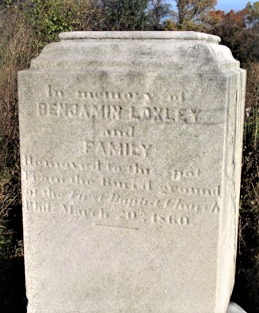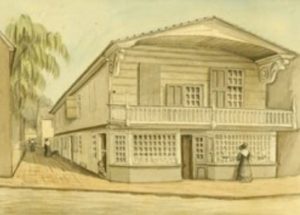Title: Army Major, Revolutionary War; master builder
Birthdate: December 20, 1720
Death Date: October 10, 1801
Plot Location: Section 112, Lot 53

Benjamin Loxley was a builder and developer by trade, but he also helped build the new nation through the fight for independence and constructing the meeting places of the new government.
Early Life
He was the son of Benjamin and Elizabeth Loxley in Wakefield, England, near Yorkshire. When he was 14 he moved to Pennsylvania to live with a maternal uncle on a farm in Darby, Pennsylvania. He worked there as a farmhand for two years. His uncle then indentured him to Joseph Watkins to learn the carpentry and cabinet making trades. He was freed of the commitment in 1742 when he was 22, and that same year he married Joseph’s sister. They had two sons before she died in 1760.
Benjamin formed a partnership with another carpenter, William Henderson, and the business was very successful. They built houses that were much in demand in the new bustling city of Philadelphia. Loxley became very wealthy through the business as well as from an inheritance.
Mid-life
Benjamin was both a businessman and a patriot as he began associating with the future power brokers who would form the new state and federal governments. He was a member of the Carpenters’ Company, the oldest craft guild in America, founded in 1724 to promote and support the building trades.
Together with architect Robert Smith and Thomas Newell, Benjamin purchased land on Chestnut Street in 1768 for the guild to use as a meeting place, and by 1775 Carpenters’ Hall was completed. Still privately owned and operated today by the Carpenters’ Company, the building was the meeting place of the First Continental Congress in 1774 and the official birthplace of the Commonwealth of Pennsylvania in June, 1776. Benjamin also helped build the Pennsylvania State House in 1753, which would eventually be named Independence Hall.
 In the 1740s he built 10 two-story houses together in center city. That area today is called Loxley Court. The complex is entered by walking north through an iron gate next to 321 Arch Street.
In the 1740s he built 10 two-story houses together in center city. That area today is called Loxley Court. The complex is entered by walking north through an iron gate next to 321 Arch Street. The Loxleys lived in house number 2, and his front door key was the key used by Franklin for his famous lightning/electricity experiment.
The Loxleys lived in house number 2, and his front door key was the key used by Franklin for his famous lightning/electricity experiment.
Military
Because Pennsylvania was founded by Quakers, there was no provincial military organization so individual towns formed militias for their own defense. Benjamin began learning about cannons and fire arms about the time Military Associations were being formed. These were more skilled and trained, and sometimes joined with the British forces on missions. During the French and Indian War a British general put Benjamin in charge of millitary supplies stored in Philadelphia.
At the beginning of the Revolutionary War, Benjamin was appointed Captain of the First Philadelphia Artillery Company in the 4th Foot Artillery Battalion, in charge of 175 men. He knew laboratory work, artillery duty, and military stores. He had contacts with former British storekeepers and was able to obtain ammunition and cannon for the new nation despite being an enemy of the British. He built several forts along the Delaware River as defenses against enemy ships sailing to Philadelphia.
In July, 1776 Captain Loxley led his company in boats down the Delaware River to an engagement with British gunboats at the Battle of Red Bank. A few weeks later he was promoted to major and marched 80 miles to Amboy, New Jersey to prevent the British army from crossing over from Staten Island.
Personal Life
In 1761 Benjamin married his second wife, Catherine Cox from Upper Freehold, New Jersey. They had 12 children in addition to the two boys from his first marriage. Only five of those 12 lived to adulthood.
Loxley was a member of the American Philosophical Society, whose distinguished members included John and John Quincy Adams, Benjamin Franklin, Thomas Jefferson, James Madison, and George Washington.
Loxley died in Darby, Pennsylvania on October 10, 1801 and was originally buried at the First Baptist Church cemetery at 218 Arch Street in Philadelphia. The inscription on his stone says, “Removed to this spot from the burial ground of First Baptist Church, Phil. March 20, 1860.”

Support the Friends of Mount Moriah
Help us in our mission to restore and maintain the beautiful Mount Moriah Cemetery by donating to our cause or volunteering at one of our clean-up events.

